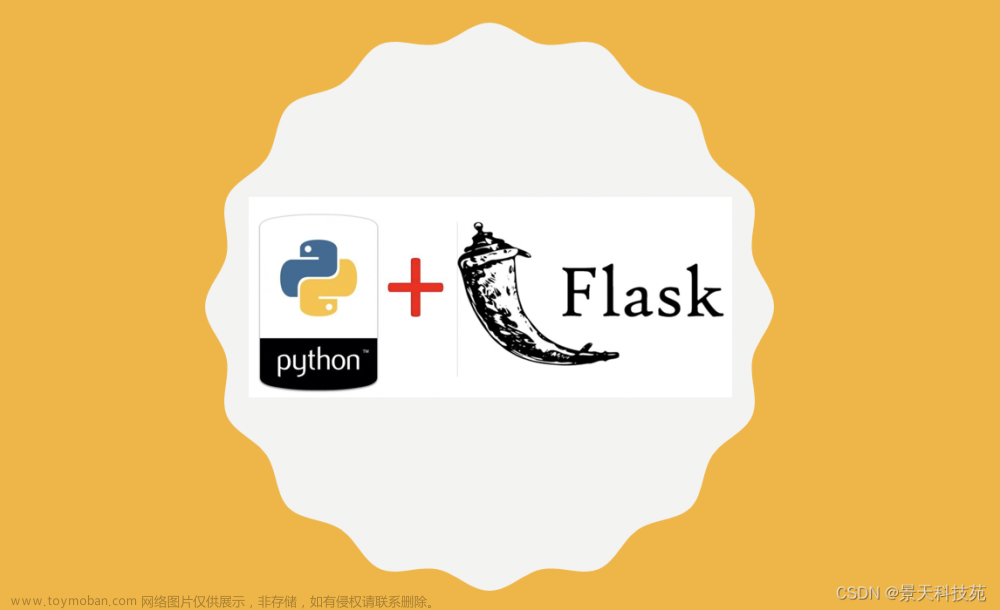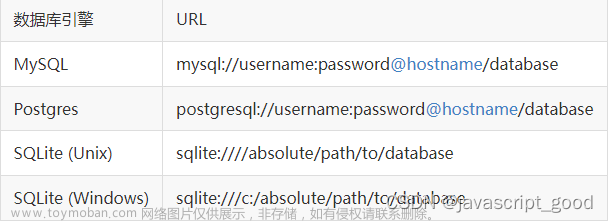写在前面
这篇文章被搁置真的太久了,不知不觉拖到了周三了,当然,也算跟falsk系列说再见的时候,真没什么好神秘的,就是个数据库操作,就大家都知道的CRUD吧。
Flask SQLAlchemy的使用
1、Flask SQLAlchemy简介
Flask SQLAlchemy 是基于 Flask web 框架和 SQLAlchemy ORM(对象关系映射)的工具。它旨在为 Flask web 应用程序提供更方便的数据库操作。SQLAlchemy 本身是一个全功能的 ORM,而 Flask-SQLAlchemy 是在此基础上为 Flask 应用程序提供了一些额外的功能。
2、安装Flask-SQLAlchemy
pip install flask-sqlalchemy
3、举个栗子
后端业务代码如下:
import pymysql
from flask import Flask, request, flash, url_for, redirect, render_template
from flask_sqlalchemy import SQLAlchemy
from flask_case.config import Config
pymysql.install_as_MySQLdb()
# 实例化一个flask对象
app = Flask(__name__)
# 设置一个密钥
app.secret_key = 'a_secret_key'
# 从配置对象中加载配置信息
app.config.from_object(Config)
# 创建SQLAlchemy对象
db = SQLAlchemy(app)
class books(db.Model):
id = db.Column('student_id', db.Integer, primary_key=True)
name = db.Column(db.String(100))
price = db.Column(db.String(50))
def __init__(self, name, price):
self.name = name
self.price = price
@app.route('/')
def show_all():
return render_template('show_all.html', books=books.query.all())
@app.route('/add', methods=['GET', 'POST'])
def add():
if request.method == 'POST':
if not request.form['name'] or not request.form['price']:
flash('输入项不能为空!', 'error')
else:
book = books(request.form['name'], request.form['price'])
print(book)
db.session.add(book)
db.session.commit()
flash('新书上架成功!')
return redirect(url_for('show_all'))
return render_template('add.html')
if __name__ == '__main__':
with app.app_context():
db.create_all()
app.run(debug=True)
新增书页面add.html,示例代码如下:
<!DOCTYPE html>
<html>
<body>
<h3>Flask SQLAlchemy Demo</h3>
<hr/>
{%- for category, message in get_flashed_messages(with_categories = true) %}
<div class = "alert alert-danger">
{{ message }}
</div>
{%- endfor %}
<form action = "{{ request.path }}" method = "post">
<label for = "name">name</label><br>
<input type = "text" name = "name" placeholder = "name" /><br>
<label for = "price">price</label><br>
<input type = "text" name = "price" placeholder = "price" /><br>
<input type = "submit" value = "Submit" />
</form>
</body>
</html>
书单列表页show_all.html,示例代码如下:
<!DOCTYPE html>
<html lang = "en">
<head></head>
<body>
<h3>
<a href = "{{ url_for('show_all') }}">Flask
SQLAlchemy Demo</a>
</h3>
<hr/>
{%- for message in get_flashed_messages() %}
{{ message }}
{%- endfor %}
<h3>Books (<a href = "{{ url_for('add') }}">Add Book
</a>)</h3>
<table>
<thead>
<tr>
<th>name</th>
<th>price</th>
</tr>
</thead>
<tbody>
{% for book in books %}
<tr>
<td>{{ book.name }}</td>
<td>{{ book.price }}</td>
</tr>
{% endfor %}
</tbody>
</table>
</body>
</html>
4、效果


5、知识点
CRUD操作:
- db.session.add (模型对象) - 将记录插入到映射表中
- db.session.delete (模型对象) - 从表中删除记录
-
model.query.all() - 从表中检索所有记录(对应于
SELECT查询)。
写在最后
在写这部分文章时候,总感觉它跟mybatis很像,比如可以将数据从数据库映射到对象,支持创建数据库表和定义数据模型,并提供了相应的接口及对应事务的操作,直白点说,不用手撕sql。文章来源:https://www.toymoban.com/news/detail-749019.html
但就性能来看的话,还是MyBatis好,毕竟是持久层框架,哈哈!文章来源地址https://www.toymoban.com/news/detail-749019.html
到了这里,关于大白话说Python+Flask入门(六)Flask SQLAlchemy操作mysql数据库的文章就介绍完了。如果您还想了解更多内容,请在右上角搜索TOY模板网以前的文章或继续浏览下面的相关文章,希望大家以后多多支持TOY模板网!











